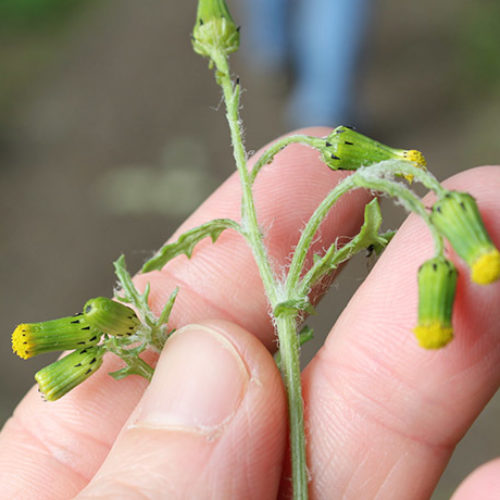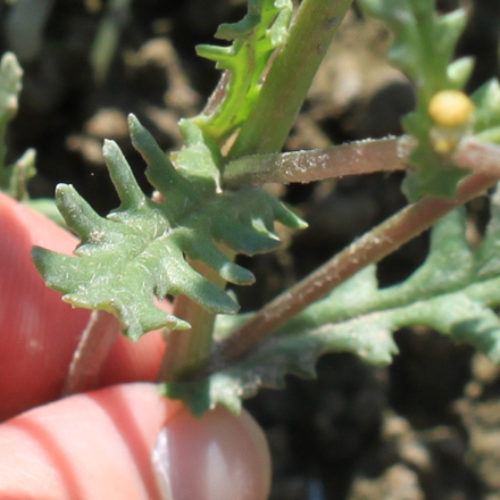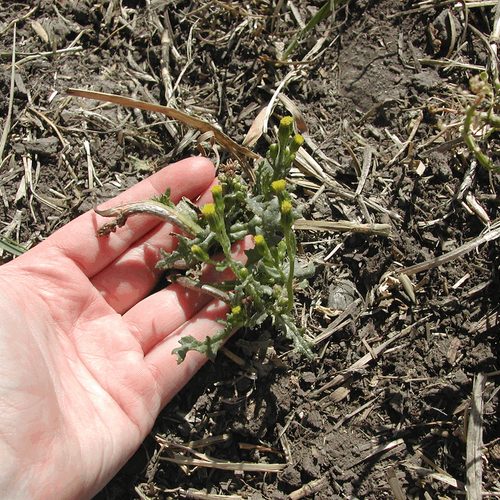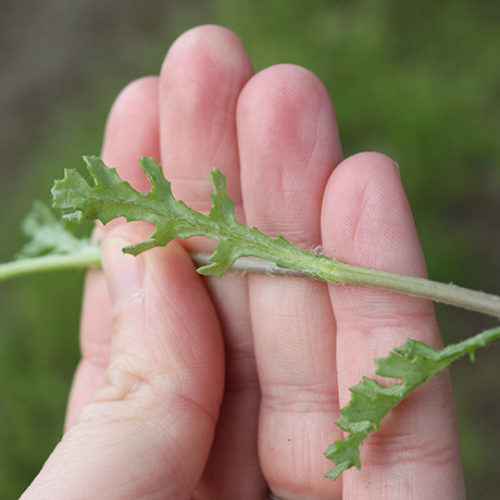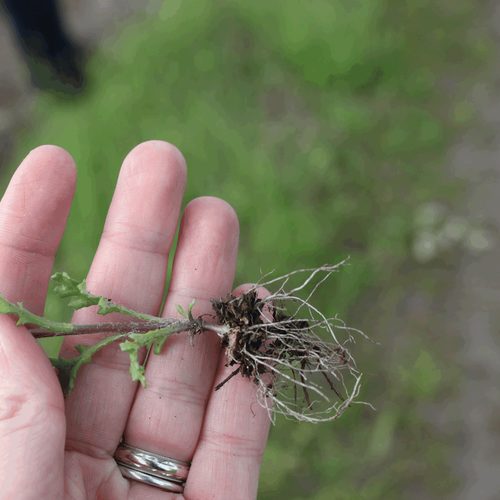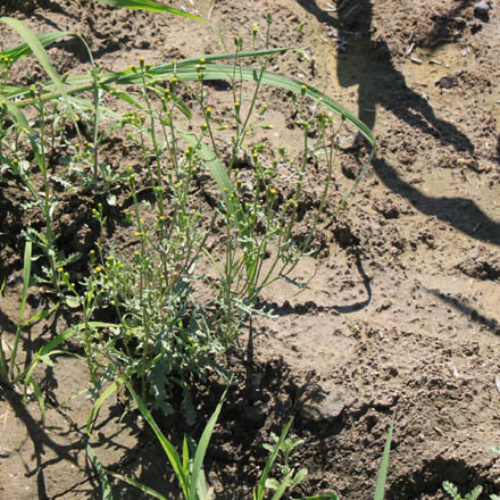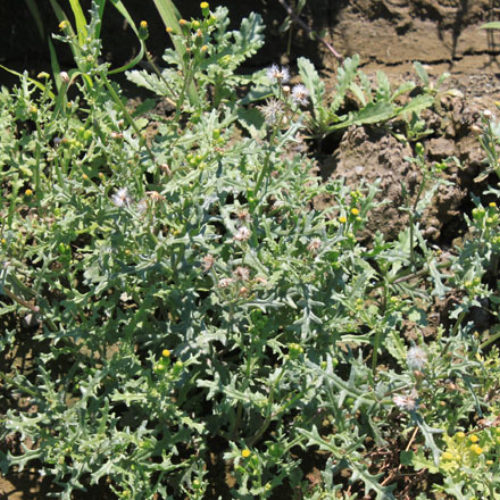Common Groundsel
Senecio vulgaris
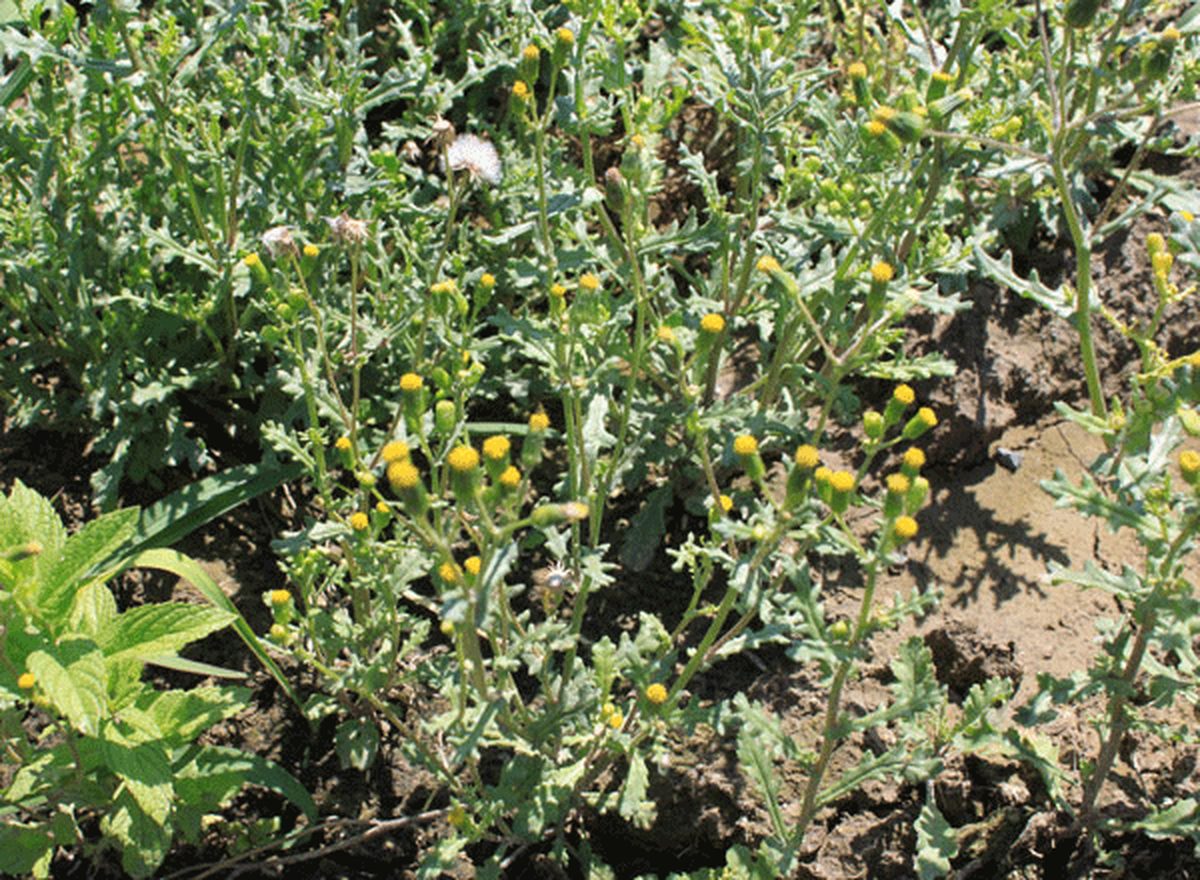
Family: Asteraceae
Other Common Names: old-man-in-the-Spring
Weed class: C
Year Listed: 2004
Native to: Europe, Asia and Northern Africa
Is this Weed Toxic?:
humans, livestock
Why Is It a Noxious Weed?
Common groundsel is a problem weed in cultivated crops, gardens and nurseries. It is poisonous to cattle and horses and toxic to humans. It contains pyrrolizidine alkaloids, which can cause irreversible liver damage and possibly death.
How would I identify it?
General Description
The plant is usually a winter annual, sometimes biennial, though it may germinate in all seasons. It grows from 4 to 18 inches tall.
Flower Description
Flowerheads are numerous, with yellow disk flowers, but no ray flowers. The heads are cylindrical, 1/4 to 1/2 inch long, with black-tipped bracts around the base.
Leaf description
Leaves are deeply lobed with toothed margins and may be smooth to hairy. They have little, or no, stalks and are alternately arranged on the stem. Basal leaves are usually purplish on the under surface, 1 to 4 inches long and 1/2 to 1-1/2 inches wide.
Stem description
Plants typically have one stem that may have branching, 3.9 to 15.7 inches tall.
Fruit Seed Description
The seeds are slender, ridged, about 1/2 inch long, and tipped with a tuft of silky white hairs.
May Be Confused With
A similar species is woodland groundsel (Senecio sylvaticus). This plant generally is larger, growing up to 3 1/2 feet tall, with leaves more deeply lobed than those of common groundsel. Leaves are greenish gray and woolly. They are largest near the base of the plant, becoming increasingly smaller toward the top. The plant has a nauseating odor when bruised. Woodland groundsel more often is found along roads and in disturbed areas in the forest, while common groundsel is a weed of fields and gardens and the waste areas nearby.
Where does it grow?
This weed is found in many crops including forages, cereals, mint, berries, and row crops, as well as in ornamentals and vegetable gardens. Please click here to see a county level distribution map of common groundsel in Washington.
How Does it Reproduce?
Groundsel produces abundant seeds which spread by floating on the wind with their parachutes of hair. One groundsel plant can produce as many as one million seeds in a season.
How Do I Control It?
Mechanical Control
Common groundsel can be controlled by tillage in the fall and early spring. New plants can still establish in newly cultivated soil from the reservoir of seeds in the soil or from seeds blown in from adjacent areas.
Biological Control
Larvae of the cinnabar moth, Tyria jacobaeae, are released extensively in western Oregon and western Washington for biological control of tansy ragwort. It also eats groundsel, but these caterpillars are not capable of significantly reducing a groundsel infestation because they are only present from June through August.
Herbicide Control
Please refer to the PNW Weed Management Handbook, or contact your county noxious weed coordinator.
For More Information
See our Written Findings for more information about common groundsel (Senecio vulgaris).
King County NWCB Fact Sheet on common groundsel



